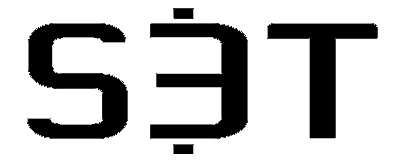🧠 5.30.2025 - Being the advantage

In a world of AI and robots, the secret edge is ...being human.
🎧 Listen here or on Spotify
In this Issue
🔮 Consumer Mood Lifts, But Risks Remain
May’s consumer confidence spiked—but still signals caution. Expectations Index jumped to 72.8 (still below recession warning level of 80). Optimism tied to possible trade breakthroughs. [📉↗️]
💵 De-Dollarization: Currency Shift in Motion
Global investors are moving away from the USD. A mix of trade wars, high deficits, and inflation are accelerating the decline (-7.5% YTD). This could limit U.S. economic and military clout. [🌍💱]
🤖 Robot Nurses vs. Admin Overload
Taiwan pilots robot nurses to combat staffing shortages. Meanwhile, U.S. hospitals see soaring admin growth—3200% since HIPAA—highlighting the need for balance in care vs. compliance work. [🏥🤖📊]
🏢 Corporate Healthcare Takeover
75% of U.S. physicians now employed, not independent. Corporate and PE ownership is rising—though new state bills are pushing back. Younger doctors value job security, not private practice. [💼🩺]
⚠️ White Collar Shakeup & Shadow AI Surge
AI isn’t just replacing drive-thru workers—it’s disrupting consultants too. Shadow AI tools are rising fast (74K+ unsanctioned AI apps), forcing firms to rethink governance and value delivery. [👔💻]
🧠 Anthropology > More AI
Innovation leaders now seek anthropologists to build tech that connects with humans. In a world of AI, understanding people is your edge. Know what’s needed, give AI clear tasks, and demand excellence. [🧬🤝]
⚙️ AI: From Training to Inference
Tech giants now focus on deploying trained AI (inference) at scale. It’s less about building the next model and more about powering real-time apps. Fintech and Chinese chipmakers are riding the wave. [⚡🧠📲]
[macro-economics]

Consumer confidence metrics improve but linger in recession territory.
Full Access Members: See the S3T Economic Dashboard for the Top 500+ US & International real-time economic indicators.
May's jump in consumer confidence, the highest since the sharp recovery in 2021, is attributed to talk of trade deals leading consumers to believe the worst outcomes may have been averted. "The Expectations Index—based on consumers’ short-term outlook for income, business, and labor market conditions—surged 17.4 points to 72.8, but remained below the threshold of 80, which typically signals a recession ahead." See Consumer Conference Board for full analysis.
De-dollarization underway
Just as JP Morgan and others feared, investors are trading US dollars for other assets in the name of currency diversification, hoping to manage their risks during the "tectonic shifts" in US finance and trade policy.
"Don’t tie your entire financial future to a single economy, especially one facing mounting structural challenges...diversifying across currencies helps protect your wealth from dollar-specific shocks." - Nestmann
What's driving de-dollarization? For one, the US launched a trade war while carrying historically unprecedented deficits as noted in the Business Times link above. Trade wars increase risk of recession, which then forces interest rate cuts and other actions that expand deficits. But as Morningstar notes, its not just about tariffs - there a a mix of factors behind the US Dollar's decline - down 7.5% so far in 2025. Inflation and deteriorating financial outlooks are expected to drive continued decline.
The Atlantic Council worries de-dollarization (reduced reliance on US dollar in global finance and trade) could make it harder to finance the US's global dominant military.
📶 Healthcare investment signals: Robot Nurses, Administrative Ratios, Corporate Ownership
Taiwan's hospitals test robot nurses
Foxconn, NVIDIA and Kawasaki have teamed up to create Nurabot, a robot designed to serve as an assistant to nurses, taking some of the less clinical tasks:
- delivering supplies, medications, saving staff trips to supply closets
- delivering healthcare education materials to patient bedsides.
- monitoring wards and directing visitors.
Future features in development include assistance with lifting patients, conversing in multiple languages and recognizing faces. The effort is intended to address the world wide nurse shortage - projected to reach 4.5m by 2030.
Ratio of administrators vs physicians
On the other hand there seems to be no shortage of healthcare administrative staff. This is a continuing issue... the chart below goes through 2009. The same issue got more attention in 2017 (Beckers, and Athena Health) noting administrative staffing growth of 3200% the same period.
Many attributed this to the introduction of HIPAA and other complex regulatory frameworks. These required organizations create large staffing functions focused on ensuring that the organization can prove its compliance with regulatory frameworks.

Emmetropia calls for a balanced perspective regarding the increase in administrative staff. As healthcare grows more complex, dividing responsibilities is essential:
